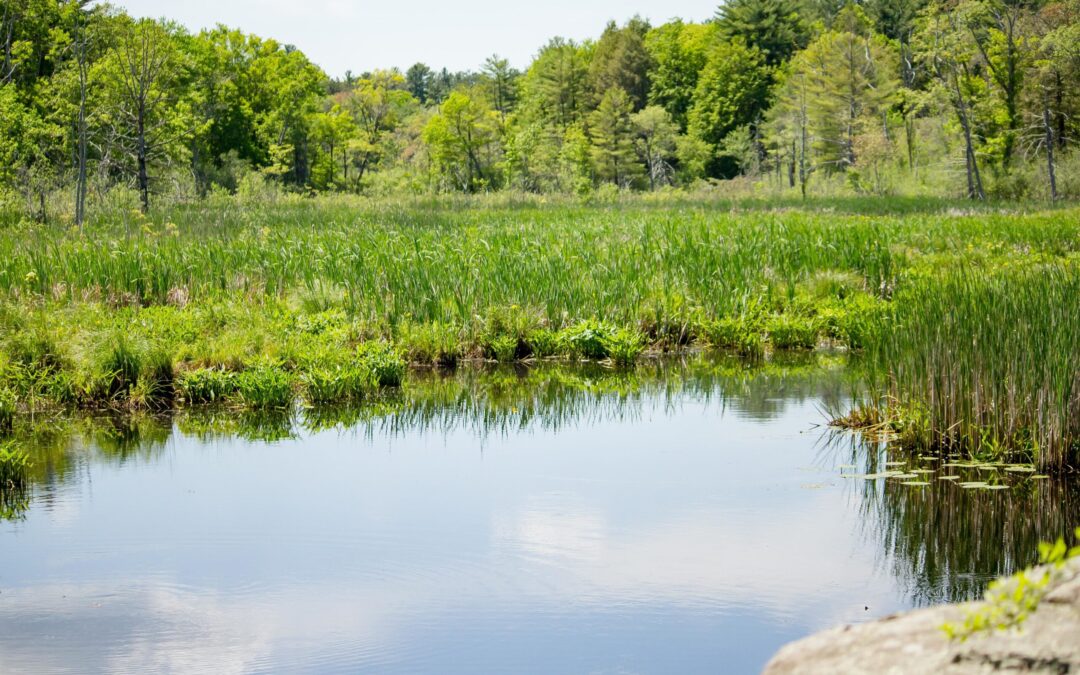Stagnant Waters: The Impact on Ponds and Treatment Methods
Stagnant water in ponds can pose significant challenges, affecting both the health of the ecosystem and the enjoyment of the pond itself. When a pond becomes stagnant, various issues arise, such as decreased oxygen levels, increased growth of algae and unwanted aquatic plants, foul odors, and a decline in overall water quality. Fortunately, there are effective stagnant pond treatment methods available to combat these problems and restore the vitality of these stagnant ponds and Healthy Ponds is here to reveal them. Let’s discuss the impact of stagnant waters on ponds and explore practical and proven treatment approaches to revitalize and maintain a thriving pond environment.
Defining Stagnant Water
Stagnant water, also known as “standing water,” is water that remains still for a prolonged period. When there is no movement or aeration, stagnant water creates an ideal environment for the growth of biofilms, which are collections of bacteria or fungi.
As stagnant water sits, it gradually loses its oxygen content, becoming anaerobic, meaning there is no oxygen present. This lack of oxygen renders the water unable to support life. When water becomes stagnant, bacteria start to multiply on the water’s surface. This can pose a risk to humans and animals as they produce toxins that can be harmful if exposed.
Stagnant Water’s Effect on Ponds
Ponds are crucial for our environment as they are a habitat for many living things. However, when the water in these bodies becomes stagnant, it can have negative impacts on health and the ecosystem. Stagnant water in a pond leads to a decrease in dissolved oxygen levels, which can harm fish populations and overall water quality. Additionally, bacteria produce harmful chemicals that pollute the water, making it unsafe for people to be around and for organisms to live in.
We dig further to understand the various effects of stagnant water on ponds:
1. Toxic Algae Growth
Stagnant water in ponds creates the perfect conditions for algae to thrive. Algae are tiny plants that multiply rapidly when the water becomes stagnant.
Some types of algae produce toxins that can be harmful to both humans and animals. Moreover, these algae can form dense layers that block sunlight from reaching the bottom of the water. With less sunlight, there is less photosynthesis, resulting in lower oxygen levels in the water. This change in the water’s composition worsens its overall quality.
When large amounts of algae grow in ponds, they can deplete the dissolved oxygen in the water, putting fish and other aquatic animals at risk. This can have devastating consequences for the wildlife in these water bodies. Understanding the risks associated with stagnant water in retention ponds is essential.
2. Fish Death
Many fish rely on oxygen to survive. When a pond’s water becomes stagnant, the oxygen levels decrease, posing a threat to the fish and its habitat.
The consequences extend beyond the fish themselves. The death of fish in a pond can set off a domino effect throughout the ecosystem’s food web, impacting other animals in the area. Stagnant water also heightens the risk of winter fish kill during colder months, further exacerbating the situation.
3. Poor Pond Odor
When the water in a pond sits still for too long, it becomes stagnant, and you might notice an unpleasant smell. This odor occurs because the stagnant water has low levels of dissolved oxygen. As a result, dead fish and plants start to decompose in an anaerobic environment, emitting a foul “rotten egg” smell.
However, the smell isn’t the only problem when water bodies become stagnant. The presence of hydrogen sulfide gas, responsible for the bad odor, can also be poisonous. It’s important to address the issue of stagnant water in ponds not only for the sake of the unpleasant smell but also to ensure the safety and well-being of the ecosystem.
4. Overabundance of Nutrients
Over time, ponds naturally undergo changes. However, when human activities introduce excess nutrients into the water, it can disrupt the balance of aquatic life. This is evident when plankton and algae multiply rapidly, out-competing other organisms and reducing biodiversity. These changes indicate that the stagnant water body is becoming eutrophic, or abundant with nutrients.
Additional signs of eutrophication include increased algae growth, a decline in fish populations, reduced variety of plant and animal species, deterioration of the shoreline, lower levels of dissolved oxygen, higher levels of nitrates and phosphates, alterations in watercolor, and diminished water clarity. These signs collectively indicate a shift in the water body’s health and highlight the negative impact of excess nutrients on its ecosystem.
Stagnant Pond Treatment and Prevention
To prevent stagnant water in ponds, there are a few important steps to take. When managing small ponds, it’s crucial to be mindful of treatment efforts and the runoff from the surrounding area.
If you’re planning to create a pond, ensure its cleanliness by using pond aeration and environmentally friendly beneficial bacteria. Add a variety of beneficial aquatic plants, such as lilies and submerged plants, to help absorb excess nutrients and provide shade. They also compete with algae for resources, limiting their growth.. Avoid using fertilizers or pesticides near the pond as they contribute to runoff, which carries harmful substances into the water.
Remember, your pond is not a garbage disposal. Adding garbage, organic waste like leaves and grass clippings, or compost will only worsen the stagnant conditions. It’s also essential to refrain from dumping used oil or washing paint brushes in the pond, as these toxins can accumulate and harm aquatic life.
Healthy Ponds Carries All-Natural Stagnant Pond Treatment Products
At Healthy Ponds, we understand how troublesome stagnant ponds can be. That’s why we carry a variety of all-natural pond water solutions including stagnant pond treatment! Take a look at our products today or reach out if you have any questions. We’re here to help you on your journey toward a healthier pond.


